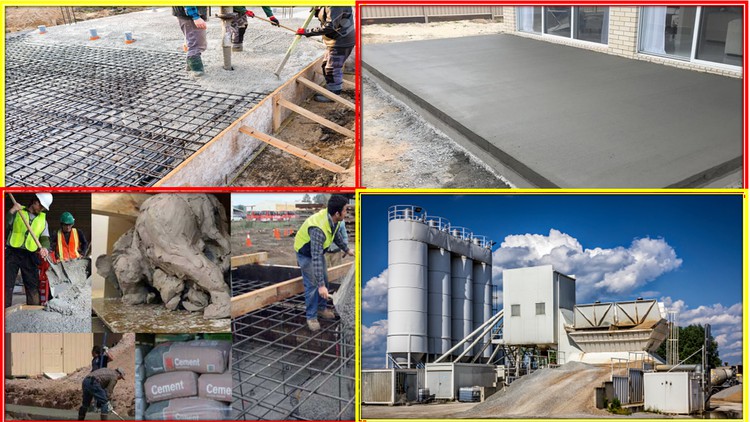Basic Concrete Technology l Introduction to Cement & Types – Free Udemy Courses
Master l Concrete l Concrete Technology l Reinforced concrete l Concrete Mix Design l Cement l Concrete design l, Civil
What you’ll learn
Basic Concrete Technology l Introduction to Cement & Types – Free Udemy Courses
- Basic of Concrete
- Types of Cement, Its Applications
- Workability & its uses
- Admixtures & their types
Requirements
-
nil
Description
In its simplest form, concrete is a mixture of paste and aggregates. The paste, composed of portland cement and water, coats the surface of the fine and coarse aggregates. Through a chemical reaction called hydration, the paste hardens and gains strength to form the rock-like mass known as concrete.
Within this process lies the key to a remarkable trait of concrete: it’s plastic and malleable when newly mixed, strong and durable when hardened.
Concrete’s durability, strength, and relatively low cost make it the backbone of buildings and infrastructure worldwide—houses, schools, and hospitals as well as airports, bridges, highways, and rail systems. The most-produced material on Earth will only be more in demand as, for example, developing nations become increasingly urban, extreme weather events necessitate more durable building materials and the price of other infrastructure materials continues to rise.
Even construction professionals sometimes incorrectly use the terms cement and concrete interchangeably. Cement is an ingredient of concrete. It is the fine powder that, when mixed with water, sand, and gravel or crushed stone (fine and coarse aggregate), forms the rock-like mass known as concrete.
Concrete is a composite material composed of fine and coarse aggregate bonded together with a fluid cement (cement paste) that hardens (cures) over time. Concrete is the second-most-used substance in the world after water,[2] and is the most widely used building material.[3] Its usage worldwide, ton for ton, is twice that of steel, wood, plastics, and aluminum combined.[4] Globally, the ready-mix concrete industry, the largest segment of the concrete market, is projected to exceed $600 billion in revenue by 2025.[5] This widespread use results in several environmental impacts. Most notably, the production process for cement produces large volumes of greenhouse gas emissions, leading to a net 8% of global emissions.[6][7] Other environmental concerns include widespread illegal sand mining, impacts on the surrounding environment such as increased surface runoff or urban heat island effect, and potential public health implications from toxic ingredients. Significant research and development are being done to try to reduce the emissions or make concrete a source of carbon sequestration and increase recycled and secondary raw materials content into the mix to achieve a circular economy. Concrete is expected to be a key material for structures resilient to climate disasters,[8] as well as a solution to mitigate the pollution of other industries, capturing wastes such as coal fly ash or bauxite tailings and residue.
Who this course is for:
- Civil Engineers, Planning Engineers, Quantity Estimators, College students, Concrete Curious










